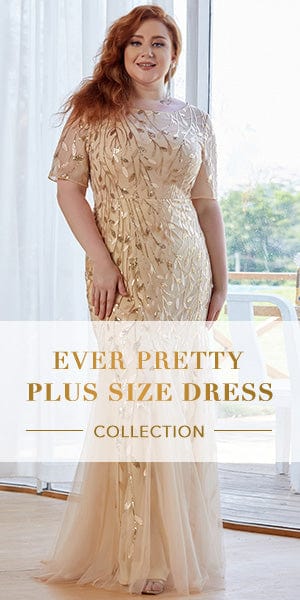THE ODD COSTUMES? NO!
06:29
Should Lolita Outfits Be Stereotyped As Odd
Costumes? Absolutely Not
Are you a lover or hater of Lolita
fashion or are you completely unaware of it? Before we go into the unique
nature of this subculture, let’s introduce what it is. Originating in Japan in
the 70s, the Victorian styled street fashion gained momentum in the 80s and
90s. The word ‘Lolita’ is inspired by the pre-adolescent heroine of Vladimir
Nabokov’s novel of the same name. She is seen as a nymphet by the older male
narrator. Lolita fashion also tries to create an adorable, child-like look but
is in no way connected to the premise of the novel. Decorated with lace,
ribbons, flounces and flared sleeves, this style is highly inspired by
Victorian and Rococo dresses. Lolita has also combined itself with other
subcultures like Goth, Manga and Anime to produce more styles.
There
is nothing odd about Lolita costumes.
Lolita outfits and shoes are intricately
detailed and conspicuous in their designs and colors. Because of this they look
distinctly different and always stand out of the crowd. As a result, a lot of
people refer to this fashion as odd costumes in a derogatory manner. But let me
tell you that there is nothing odd about Lolita fashion. It is a beautiful
subculture that has thrived on the streets of Japan for decades. It is highly
visible in anime, manga and all other Japanese art forms. Calling them odd
costumes would be equating them with poorly planned Halloween costumes or cheap
Cosplay items. This is not only very disrespectful towards a cultural movement
thriving in Japan but towards fashion in general. Because, Lolita is taking
over catwalks globally and calling it odd or weird will only show your
ignorance of fashion trends.
In
2009, Misako Aoki, a Lolita fashion model was appointed as Japan’s ambassador
of pop culture. In 2012, Frill by Affrilliation, a Lolita-only convention took
place for the first time in Atlanta, U.S. Similar such events are being held
around the world for Lolitas and Lolita designer labels. In 2013, the Japan
Lolita Association was established by Omula Fashion Design College in Fukuoka
to encourage academic study of the Lolita subculture. In 2016, the
spring/summer edition of the New York Fashion Week saw authentic Lolita outfits
for the first time. During NYFW 2017, the runway saw models strutting the
catwalk in knee-length petticoats, ruffles and Victorian bodices.
Fashion
recycles stylistic elements from the old to create the novel. Similarly, Lolita
fashion takes inspiration from styles popular in European history and the
hyperbolic cuteness associated with bisque dolls. It is then combined with
modern Japanese pop culture and the concept of kawaii to create a unique visual
experience. Therefore, Lolita is a diverse subculture that has both a rich
history and a space for individual agency. There is nothing cheap or bizarre about
it.
Now, let’s look at some styles inspired
by the Lolita designs displayed by China Fashion Collective at New York Fashion
Week.
This is a Magic Tea Party sleeveless
dress in white and blue. You can pair this with a long-sleeved jacket with a
front-slit and white pointy toes to create the runway look. Find the dress
here.
Lolita bridal fashion has been
dominating the catwalks for a while. Dress up in a classic Lolita wedding
dress adorned with white lace, frills and red bows. If you want to be a
Lolita bride, get the outfit
here.
The
Lolita Aesthetic is different yet beautiful.
Beauty is a subjective concept and what
is considered as beautiful varies from person to person. A woman’s individual
style can be feminine, athletic, emo, hipster, preppy etc. depending on what
she finds attractive. The Lolita aesthetic whether gothic, sweet or classic,
looks equally beautiful on women. It might seem different to some people,
especially outside Japan, but there is nothing distasteful about it. Those who
feel happy and cheerful in bright Lolita outfits wouldn’t feel comfortable
wearing jeans and a tee. Lolita fashion might not be for you but always
remember, ‘to each his own’.
What
is considered cute or attractive in Lolita fashion is obviously different from
mainstream tastes and trends. Lolita is about fierce self-expression in
spectacular, flamboyant ways without caring about the fashion rules set by
society. It’s about dressing for yourself, in your own terms, and not for
others. The aesthetic principles of Lolita highlight individualism and
independence and seek to infuse these values among its wearers. Once you stop
compromising and defining yourself by what others believe, you can feel a lot
more powerful.
There
are multiple aesthetically diverse trends within the world of Lolita fashion.
The most significant of these are Gothic Lolita (Kuro-Loli), Sweet Lolita
(Ama-Loli) and Classic Lolita (Kurashikku-Lolita).
Gothic Lolita
The most popular is the Gothic inspired
sub-style featuring dark clothing, dark lipstick and smoky eyes. Common
accessories include gothic motifs, stockings or knee-highs in dark colors and
lace chokers. Find the outfit
here.
Sweet Lolita
This sub-style is the most child-like in
appearance with pastel colors, ruffles and bows. Sweet Lolita places more
importance on looking cute and girly. Animal and heart prints, pastel colored
hair and neutral makeup completes the look. Find the dress
here.
Classic Lolita
More mature in colors and styles,
Classic Lolita is usually historically inspired. Find this beautiful Victorian
style Classic Lolita dress
here.
The
dialectical attitude towards beauty.
The Western audience has often
criticized Lolita fashion for infantilizing women. Some see it as exclusively
pleasing the objectifying and pedophilic male gaze and some see it as
fetishist.
While many
Japanese Lolitas aren’t aware of the Nabokov novel at all, most western Lolitas
don’t associate sexual connotations with this subculture. Nabokov’s Lolita is
narrated by Humbert who sexualizes Dolores. Lolita fashion on the other hand,
exists in a female domain far removed from cis-male influence. In fashion,
Lolita is empowered and has her own agency. It is modest and reminds a woman of
her girlhood days and her precious memories of growing up. We should respect it.
facebook: Fashion, Beauty and Style
















0 коментара